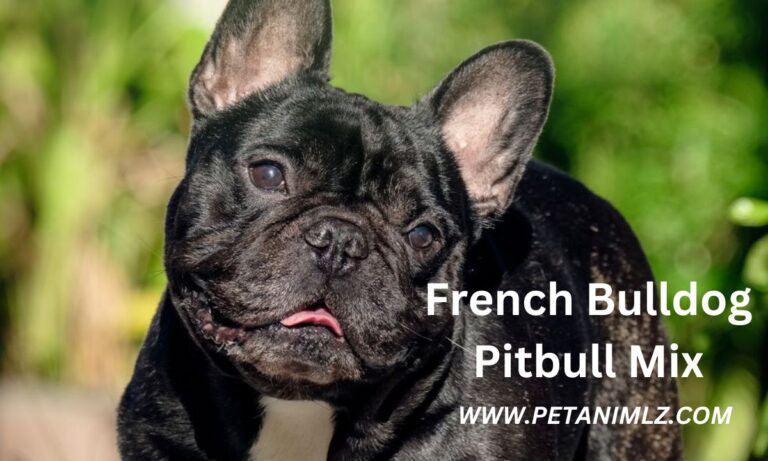The Bite Force of an American Bully: Unleashing the Power:
Introduction
In this article, complete information about the bite force of an American bully Is given. Ever wondered how powerful an American Bully’s bite really is? The American Bully, with its muscular build and distinctive appearance, has always been a topic of intrigue. But beyond its looks, understanding the Bite Force of an American Bully is crucial, especially when considering safety and training.
THE BITE FORCE OF AN AMERICAN BULLY: UNDERSTANDING ITS STRENGTH AND IMPLICATION
The American Bully is a canine breed that was developed in the 1980s after mixing with some bulldog breeds. The primary purpose for breeding this dog was companionship and showing during competitions. It sets itself apart from correlated breeds such as the American Pit Bull Terrier and American Staffordshire Terrier through its wide forehead, muscular body build along shorter muzzle compared to them therefore they may be classified as strong even though not the strongest.
They would know what methods to use while training such dogs so that they do not utilize their full strengths during training periods. For families with children or other pets, for instance, understanding their degree of ferocity ensures interactions are safe when it comes down to playing together. There exists more correlation between temperament and behavior than with bite force anyway; therefore for responsible possession, it can be seen as an affectionate friend even if its teeth are powerful.
Understanding Bite Force
Bite force is the measure of the pressure exerted by a dog’s jaws when they bite. It’s usually measured in pounds per square inch (PSI). To put things in perspective:
- The average human bite force is around 120 to 140 PSI.
- Some animals, like crocodiles, have a bite force exceeding 3,700 PSI!
Comparing these numbers can give us a clearer picture of where the American Bully stands in the animal kingdom.
Factors Influencing The Bite Force of an American Bully
Several factors can influence the bite force of a dog:
- Genetics and breed specifics: Some breeds naturally have a stronger bite force due to their jaw structure and purpose (e.g., hunting or guarding).
- Age and health of the dog: Younger dogs and those in good health tend to have a stronger bite force.
- Training and behavior: A dog that’s trained to bite (like police dogs) might exhibit a stronger bite compared to a domesticated pet.
Bite Force of the American Bully
The American Bully, with its muscular build, has a bite force that’s impressive:
- Their bite force is estimated to be around 315 PSI.
- When compared to other breeds:
- German Shepherds: 238 PSI
- Rottweilers: 328 PSI
- Mastiffs: 556 PSI
This places the American Bully in the higher range but not at the very top.
How Strong Is an American Bully Bite?
The American Bully is a breed derived from the American Pit Bull Terrier and other bulldog-type breeds. While they have a strong jaw and can exert significant force, it’s essential to note that bite strength can vary among individual dogs due to factors like size, age, health, and training.
Bite strength is often measured in pounds per square inch (PSI). While there isn’t a universally accepted PSI for the American Bully’s bite, some sources suggest that the American Pit Bull Terrier, from which the American Bully is derived, has a bite strength ranging from 235 PSI to 300 PSI. It’s reasonable to assume that the American Bully would have a similar bite strength, given its genetic lineage.
However, it’s crucial to understand a few points:
- Temperament Over Strength: While the American Bully has the potential for a strong bite, the breed is often praised for its friendly and balanced temperament. They are known to be loyal, affectionate, and good with families, including children.
- Training and Socialization: Any dog, regardless of its breed, can become aggressive if not properly trained or socialized. It’s essential to train and socialize American Bullies from a young age to ensure they are well-behaved and well-adjusted.
- Avoid Encouraging Aggression: Encouraging aggressive play or behavior can lead to unintended consequences. Always promote positive behaviors in your dog.
- Bite Inhibition: Dogs have the ability to control the force of their bite, a skill often learned as puppies during play. Teaching bite inhibition ensures that even if a dog does bite in a stressful situation, it’s less likely to cause significant damage.
What Other Dog Breeds Have Major Bite Force?
Several dog breeds are known for having a significant bite force, measured in pounds per square inch (PSI). It’s important to note that while these measurements provide an idea of potential bite strength, individual variation, training, and temperament play crucial roles in a dog’s behavior. Here are some dog breeds known for their strong bite force:
- Mastiff (especially the English Mastiff): With a bite force of around 500-552 PSI, the Mastiff tops many lists. Their massive size and strong jaws contribute to this powerful bite.
- Rottweiler: Known for their strength and guarding instincts, Rottweilers have a bite force of approximately 328-350 PSI.
- Kangal: This Turkish breed, often used to guard livestock against predators, has a reported bite force of around 743 PSI, making it one of the strongest, if not the strongest, in the canine world.
- Saint Bernard: Despite their gentle nature, Saint Bernards have a bite force of around 195 PSI.
- Dogue de Bordeaux: Also known as the French Mastiff, this breed has a bite force of about 556 PSI.
- Alaskan Malamute: Often used for sledding in Arctic regions, Malamutes have a bite force of around 210-220 PSI.
- Doberman Pinscher: Known for their loyalty and intelligence, Dobermans have a bite force of approximately 228-245 PSI.
- German Shepherd: Widely used in police and military roles, German Shepherds have a bite force of around 238-240 PSI.
- Cane Corso: This Italian breed, known for guarding and protection, has a bite force of about 700 PSI.
- Boxer: Despite their playful nature, Boxers have a strong bite force of around 230 PSI.
- Chow Chow: Known for their unique blue-black tongue, Chow Chows have a bite force of around 220 PSI.
- Dutch Shepherd: Similar to the German Shepherd, the Dutch Shepherd has a bite force of around 224 PSI.
It’s essential to understand that The Bite Force of an American Bully doesn’t necessarily correlate with its aggression or danger level. Many breeds with strong bite forces are gentle and loving when properly trained and socialized. The key is responsible ownership, understanding the breed’s needs, and ensuring proper training and socialization from a young age.
Safety Precautions and Training
Given their significant bite force, it’s essential to take precautions:
- Importance of early socialization: Introducing your Bully to various environments, people, and other animals from a young age can reduce aggressive tendencies.
- Training techniques: Employ positive reinforcement techniques and avoid punishment-based methods. This ensures your Bully doesn’t become aggressive out of fear.
- Safety precautions for families: Always supervise interactions between dogs and children. Teach children how to approach and play with dogs safely.
FAQs
How does the American Bully’s biteforce compare to a Pitbull?
The American Bully has a bite force of around 315 PSI, while the Pitbull’s is slightly less, averaging around 235 PSI.
Are American Bullies more prone to biting than other breeds?
Not necessarily. Their behavior largely depends on their upbringing, training, and socialization.
How can I ensure my American Bully doesn’t bite aggressively?
Early socialization, consistent training, and positive reinforcement are key.
Does bite force mean the dog is more dangerous?
Not always. A dog’s temperament, training, and upbringing play a more significant role in their behavior than bite force alone.
Which dog has the highest bite force?
The American Bulldog has a bite force of approximately 305 PSI, making it one of the stronger biting breeds, though not the strongest.
Conclusion
In the end, we concluded that an American Bully’s estimated bite force of approximately 315 PSI shows how strong this breed is physically. Nevertheless, a powerful bite does not in any way make an American Bully inherently dangerous. When trained and socialized well, this breed is known for its loyalty, love, and companionship hence suitable for families. The understanding of bite force plays an important role in handling their power to ensure peaceful coexistence with humans and other animals.
In short, responsible ownership, early socialization along with continuous positive reinforcement training should be emphasized because these are more important than just the bite force in influencing the behavior of an American Bully. In fact, with the right approach, an American Bully can be a caring and peaceful member of any family which serves as proof that the two opposites can live together in peace.





